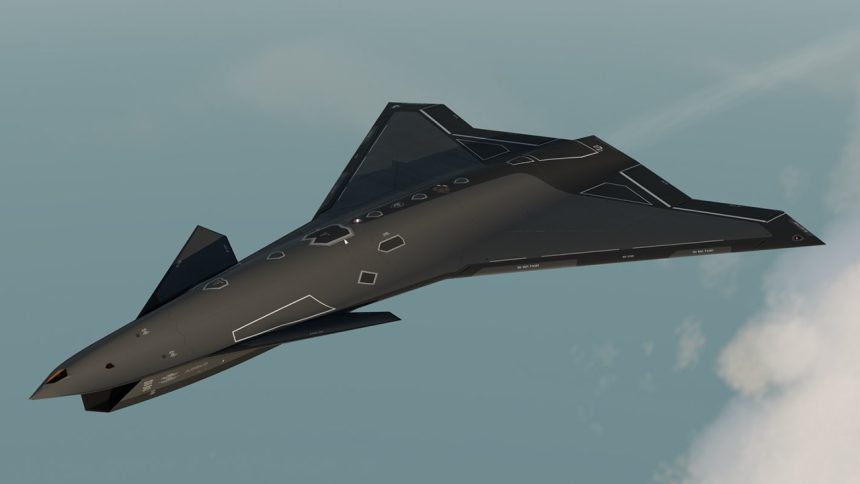The unmanned aircraft will be commanded by a pilot in the Eurofighter (and other combat aircraft).
Airbus is set to unveil “Wingman” concept at the International Aerospace Exhibition ILA, in Berlin. According to the giant European aerospace company, a full-scale model of the Wingman [noteworthy, in the official press release Airbus does not use the standard definition of “Loyal Wingman” but calls it just “Wingman”] will be on display ILA, akin to a “show car” used by the automotive industry for design exercises.
This model will demonstrate all the intended capabilities, including stealth, various armament integrations, advanced sensors, connectivity, and teaming solutions. However, like “show cars”, not everything on display may make it to production. The model showcased at ILA Berlin will serve as a foundation and catalyst to refine the design requirements for future iterations of the Wingman.
An image showing the stealthy concept was shared along the press release ahead of the exhibition.
In Airbus’s vision, the Wingman will be an unmanned fighter-type drone that will be controlled by a pilot in a current combat aircraft, such as the Eurofighter, and will handle high-risk missions that would be more hazardous for manned aircraft.
The current concept envisions the Wingman enhancing the capabilities of manned combat aircraft by adding uncrewed platforms that can carry weapons and other effectors.
“The German Air Force has expressed a clear need for an unmanned aircraft flying with and supporting missions of its manned fighter jets before the Future Combat Air System will be operational in 2040,” said Michael Schoellhorn, CEO of Airbus Defence and Space in the press release. “Our Wingman concept is the answer. We will further drive and fine-tune this innovation made in Germany so that ultimately we can offer the German Air Force an affordable solution with the performance it needs to maximize the effects and multiply the power of its fighter fleet for the 2030s.”
The Wingman’s roles could include reconnaissance, jamming targets, and engaging ground or air targets with precision-guided munitions or missiles. Manned aircraft pilots acting as “command fighters” will always retain mission control and make final decisions while benefiting from increased protection and reduced risk by delegating tactical tasks to unmanned systems. Additionally, the focus is on increasing the overall combat mass affordably, enabling air forces to match or exceed the number of adversary forces in peer or near-peer conflicts.
A first look at the Airbus stealthy Wingman
It’s not clear whether the planform and design characteristics of the “Wingman” unveiled today will make it to a prototype, but for the moment, what we see is a sleek, futuristic aircraft design with a stealthy shape. The aircraft features a smooth, angular design with clean lines and flat surfaces that are indicative of stealth technology. The absence of protruding elements helps reduce radar cross-section (RCS). The aircraft features small canard wings positioned near the front of the aircraft. The wing configuration of the aircraft in the image resembles a “cranked kite” design. Canards can enhance maneuverability and control, particularly at high speeds or during stealth operations.
The aircraft’s body seamlessly blends into the wings, a design feature often used to reduce drag and improve aerodynamic efficiency, contributing to both speed and stealth. Although not explicitly visible, the design suggests the presence of recessed engine inlets, which are a common stealth feature to minimize radar visibility and reduce heat signature. The aircraft’s surface appears to have minimal openings and hatches, and those that are present are likely to be flush with the surface.
Moreover, the color of the concept seems to suggest the use of materials and coatings optimized for LO (Low Observability).
Overall, the aircraft in the image exemplifies modern stealth technology with its angular, blended-wing design, cranked kite planform and likely use of radar-absorbing materials and coatings.









